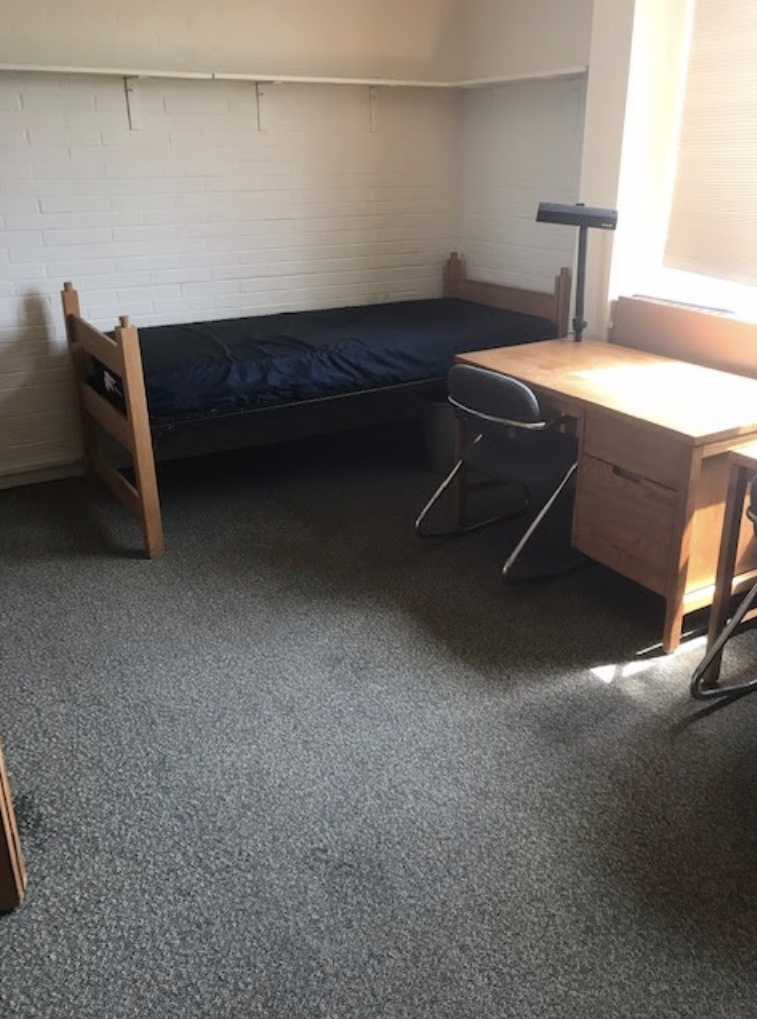Cornell University Dorms: What They’re Like from a Current Student
What’s Covered:
- Cornell University Dorms: An Overview
- Freshman Dorms
- Best and Worst Dorms at Cornell University
- Housing Selection at Cornell University
- My Dorm Experience at Cornell University
- What Are Your Chances at Cornell University?
If you’re entering Cornell in Fall 2021 or later, you will be experiencing Cornell’s completely renovated dorm housing! Cornell’s North Campus expansion is adding 2,000 beds on campus as well as new dining halls and recreation spaces. Students matriculating in 2021 will be able to live in 2 of the brand new buildings on North Campus.
My name is Juliette and I’m a current senior at Cornell studying Industrial & Labor Relations. Here’s everything you need to know about dorm life and housing at Cornell!
Cornell University Dorms: An Overview
One of the best parts about living at Cornell is that underclassmen live together in the same area of campus. This makes it easy for new students to make friends with other people who are also away from home for the first time. All freshmen (and starting this fall, some sophomores) live on North Campus, a residential community that lies on the north end of Cornell’s campus.
All freshmen are required to live on campus for their first year, and Cornell provides guaranteed housing for sophomores as well, but they are not required to live on campus. By junior and senior year, most students move off campus and into Collegetown, a neighborhood south of campus. Typically, living off campus is less expensive, but the tradeoff is that you do not have a meal plan. This can be a drawback since Cornell is constantly rated as having some of the best campus food in the country!
Cornell has many different housing options depending on your class year and the type of accommodations you’re looking for.
As a first year student, you can choose to live in the traditional North Campus residences or one of the Program Houses, which are themed residences. Sophomores can also live in Program Houses, traditional residences, or Co-Op Housing.
The set up of each room is very different. On North campus, students can live in suites, singles, doubles, or triples. Program Houses vary by layout but most are comprised of singles and doubles.
All rooms come furnished with a twin bed (extra long), closet, bureau, desk, chair, lamp, and wastebasket.
Freshman Dorms
Traditional freshman dorms are located on North Campus, but some freshmen choose to apply to live in Program Houses.
North Campus freshman housing includes:
- Clara Dickson Hall
- Court-Kay-Bauer Hall
- Ganędagǫ: Hall
- High Rise #5
- Jameson Hall
- Low Rise #6
- Low Rise #7
- Mary Donlon Hall
- Mews Hall
- Toni Morrison Hall
- Townhouse Community
North Campus is about a 15 minute walk to Central Campus, but it is easy to take the TCAT bus to get to Central in the mornings and after class. Each of the residences above offer different layouts and room types. Most dorm rooms are doubles, but there are also suites, singles, and triples.
The Program Houses include:
- Akwe:kon
- Ecology House
- Holland International Living center (HILC)
- Just About Music (JAM)
- Latino Living Center (LLC)
- Loving House
- Multicultural Living Learning Unit (McLLU)
- Risley Residential College
- Ujamaa Residential College
- Language House
Program Houses are special residential communities that unite students from different class years who have a common hobby, culture, or interest. I never lived in a program house, but I had many friends who did. My friends said they easily found community within their program houses and loved being able to share common interests with those they lived with.
It is impossible to say which dorms are the best since 2 new dorms were created just this year! I would say that High Rise, Jameson, or the Low Rises are less desirable simply because they are older and have many triples. With that said, I loved my experience living in a suite in High Rise and have so many fun memories from living there.
You are allowed to request a roommate your freshman year, or Cornell Housing can match you with a roommate based on your responses to a form asking about your living habits and preferences. Cornell Housing assigns buildings to all students, so you can’t choose your freshman year dorm.
Best and Worst Dorms at Cornell University
Below is a list of all dorms at Cornell.
North Campus:
- Clara Dickson Hall
- Court-Kay-Bauer Hall
- Ganędagǫ: Hall
- High Rise #5
- Jameson Hall
- Low Rise #6
- Low Rise #7
- Mary Donlon Hall
- Mews Hall
- Toni Morrison Hall
- Townhouse Community
Program Houses:
- Akwe:kon
- Ecology House
- Holland International Living center (HILC)
- Just About Music (JAM)
- Latino Living Center (LLC)
- Loving House
- Multicultural Living Learning Unit (McLLU)
- Risley Residential College
- Ujamaa Residential College
- Language House
West Campus:
- Alice Cook House
- Carl Becker House
- Flora Rose House
- Hans Bethe House
- William Keeton House
It is important to note that the West Campus Houses are comprised of newer buildings and older residence halls. The older halls are called The Gothics and are affiliated with the Houses. Unlike the nicer houses, the Gothics are small dorms with communal bathrooms and no air conditioning.
For example, the dorm building called Baker Tower is technically part of Alice Cook House, but it is not located in the newer Alice Cook building, rather it is just affiliated with Alice Cook. During Cornell’s sophomore housing selection, it is clear what is a “Gothic” and what rooms are located in the actual House.

South Campus:
- Cascadilla Hall
- 112 Edgemoor
- Schuyler House
- Sheldon Court
Co-Op Housing:
- Prospect of Whitby
- 660 Stewart
- Triphammer Cooperative
- Von Cramm Hall
- Wait Avenue Cooperative (302 Wait Avenue)
- Wait Terrace (308 Wait Avenue)
- Wari Cooperative
- Watermargin
Generally, the nicer dorms are newer and have amenities such as air conditioning, which is useful for Ithaca’s hot summer weather from late May to mid-September.
Something important to consider is how far away you are comfortable living from campus. Some housing on South Campus (especially Schuyler House) is at least a 30 minute uphill walk from Central Campus. When picking housing locations, be sure to check how far the building is from your campus, as well as the topography of the area. Cornell is notorious for steep hills, so you may want to consider this as you start your housing search.
The best traditional dorms are located on North Campus and West Campus. On North Campus, Court Kay Bauer and Mews, as well as the newer buildings (e.g. Ganędagǫ and Toni Morrison Hall), are all great options. Additionally, any of the “Houses” on West Campus are desirable, as long as you are not in the Gothics.
It is important to note that Cornell has a significant Greek Life population that tends to live in Greek housing for at least one year.
Housing Selection at Cornell University
Freshman who want to live in traditional residence halls are placed randomly, but students living in Program Houses must apply. Sophomore year is a bit different since students must go through the housing lottery to secure a spot for the next year. Generally, students will “block” with up to 6 students total. This means that students will be assigned a housing slot to sign up with their friends. At the time of their sign up, the “block” of students will pick the building that they want to live in together.
Sophomores prefer to be on West Campus due to its proximity to dining halls, but those who receive a late time slot during the lottery usually get spots in South Campus or decide to live in Collegetown to be closer to campus.
It is important to note that students living on West Campus must sign up for an unlimited meal plan. It may seem undesirable at first, but having an unlimited meal plan is actually really nice because the food on West Campus is so good! It is also difficult to cook in the West Campus dorms since they are so small, so it is very convenient to have a meal plan.
My Dorm Experience at Cornell University
I had a fantastic dorm experience my freshman year at Cornell! I was assigned to High Rise 5, and was placed in a double in a suite. It was so easy to get to know the people in my suite and they are still some of my closest friends today. In fact, my entire floor remained exceptionally close–we still keep in touch years later!

The double that I lived in was very large for the size (there was about 12 feet between my bed and my roommate’s bed) and I had a giant closet. The only downside was that there was no air conditioning and it got pretty hot during the day at the beginning of the year.
I also really enjoyed living on North Campus. At first, I was concerned about living far from Central Campus, but living with all freshmen on North was such a fantastic experience since we were all adjusting to college together. I met new friends all across North Campus–in my dorm, in the common areas, and at the dining halls.
As an upperclassman, I now live in Collegetown, which is different but also very fun. I’m close to many eateries and most of my friends live within a block or two from me. The walk to campus is actually closer than it was when I was on North, which is also great.
What Are Your Chances at Cornell University?
Cornell University’s acceptance rate is 11%, but your actual chances may be higher or lower depending on your profile.
If you want to know your chances of getting into Cornell, use our chancing engine! This calculator will determine your chances of acceptance at different schools depending on many factors, including your GPA, test scores, essays, and extracurriculars. Finding out your admissions odds will help you create a strategy as you apply to college
You can also use this tool to search for schools based on their size, majors and minors, and location. Best of all, the calculator is completely free!




